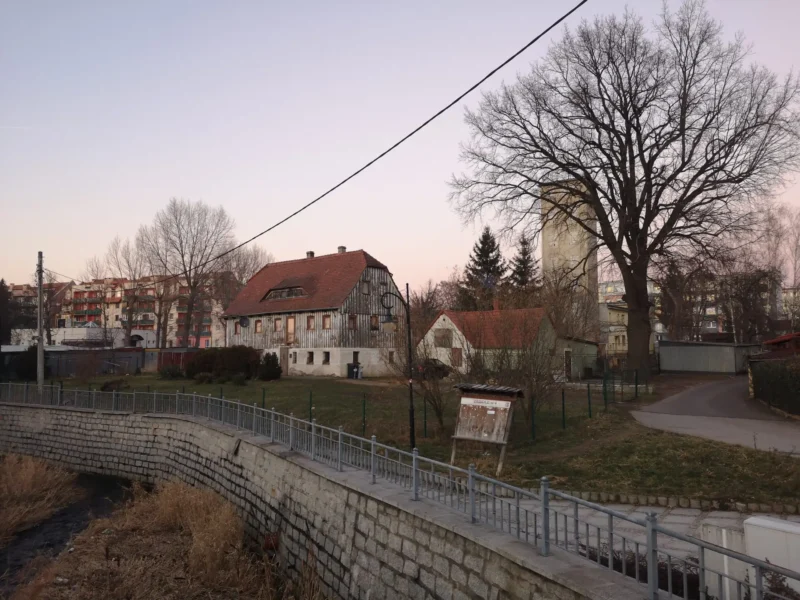
– People did not believe in any change here, in this closed part of the world. The disbelief persisted, even when the great construction works started (…). People did not believe, because at that time, even though the excavators did not move a single spoonful of earth – the rumour was that all life would die under the many-metre-high ashes thrown from the chimneys of the giant power plant. Nevertheless, people continued to live there, because there was work at the giant construction site – I read in the chronicle of Turów mine [1]. Disbelief in the skills of the engineers and workers at the construction of the combine turned out to be unjustified. In terms of scale, the investment was a European phenomenon at the time, as the Poles had no previous experience of erecting such extensive industrial complexes on their own. At almost the same time, machinery imported from the allied socialist countries, mainly from the GDR, was being designed, the plan implemented and put into use. On top of this, Turow was built by thousands of people who had no experience of even the simplest industrial work. And yet they succeeded.
Read previous chapters of the story:
Over the following decades, the mine and the power plant did their job, and there is no exaggeration in referring to them as strategic facilities. It is no exaggeration to say that a workforce has grown up around them genuinely proud of their achievements.
But when Bogatynia residents are asked today what would happen to the town if the mine ceased to operate, disbelief returns.
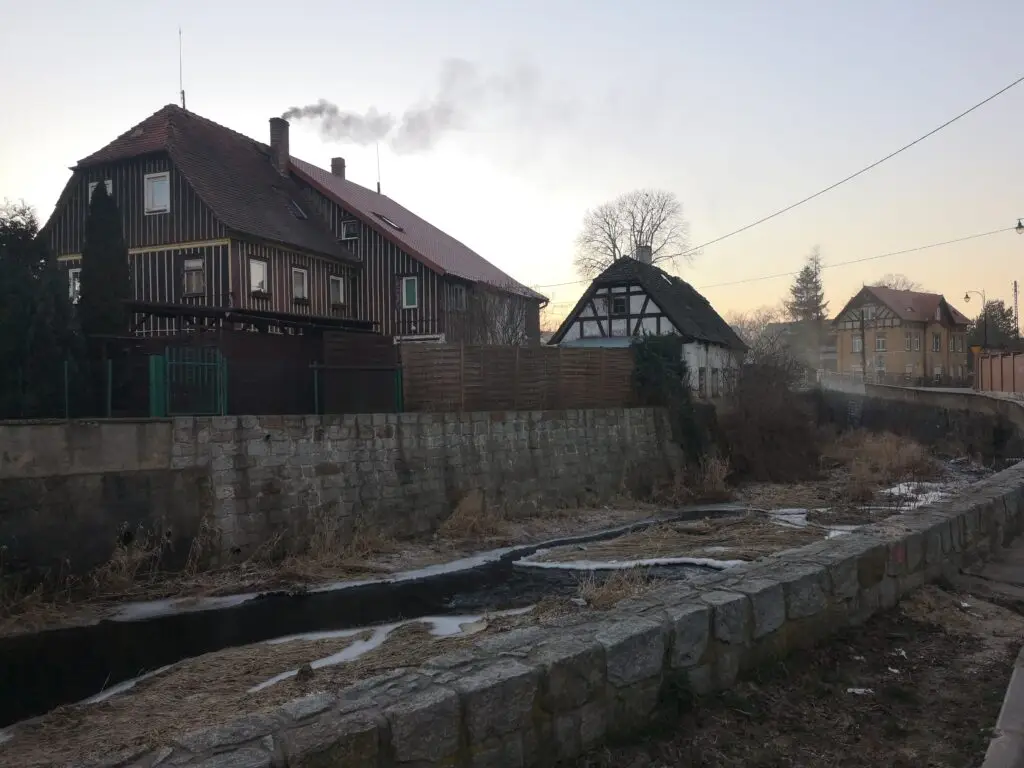
The woman, who works as a taxi driver and drives around the whole region, does not quite know how to imagine such a scenario. – If there were no mine? There would be nothing here then. Thanks to the mine we have work here. Without the mine, people will leave,” she replies.
A young waiter at one of Bogatynia’s several pizzerias has lived in Wrocław, the capital of Lower Silesia, and came back after breaking up with a girlfriend. He does not know, how long would he stay in Bogatynia. But most of those who once left Bogatynia and settled down in Wrocław, or sometimes even further, never look back.
Workers at the mine don’t want to talk about its future.
Decades ago, people did not believe in any change. Now people don’t believe in a just transition.
We don’t meet a single resident in Bogatynia who doesn’t want the mine to operate as long as possible. We do not meet anyone who understands arguments of ecological activists who lament the environmental impact of burning coal. An action in May 2021, when activists displayed the sign “Here we will burn your future. PGE” on the Turów power plant, found no understanding.
Everyone is basically of one opinion: if there is no mine and no power plant, everything else will also collapse. The question of what could work instead of them is not answered. Hardly anyone has heard of the idea of a pumped storage power station that could be developed in the opencast mine. And if they haven’t heard, it’s hard to believe that it too could generate jobs.
– People need to know by when they will be working in this industrial complex. Today is no longer the time to talk about the fact that this mine will operate for God knows how long, because the 15 years in which the region is to be transformed will pass very quickly,
– said the mayor of Zawidowo, a village just over 20 km from Bogatynia, from which around a hundred people commute to work in Turów, in September 2021. He claimed that he was expressing the belief of the majority: no one is hoping that the mine can continue to operate for much longer.
– We don’t necessarily have to be miners. This is very hard work. We will do some other job if there is an opportunity, if an investor comes in and opens a plant here in another industry. If a mine closes, it’s the downfall of the whole region, and yet we would like to work. Why can’t the state attract such an investor? Why shouldn’t Poles work at home, in Poland?
– Bogumił Tyszkiewicz, chairman of the Independent Trade Union of Turów Miners, tells me.
The context of the last question is clear: a new and constantly expanding industrial area starts practically right across the Polish-Czech border. Polish workers commute daily by minibus to the Hradek Nisa3 zone. Others cross the Polish-German border: they have found employment in the town of Zittau. We came across several runs of such a bus. Not once was it empty.
At the time of the great economic transition of the 1990s, people were expected to demonstrate their private entrepreneurship and adapt themselves to a new system, even though they had no idea about how it worked.
The inhabitants of Bogatynia were saved by the mine and the power plant. In 1994, the unemployment rate in the Jelenia Góra voivodeship exceeded 19 per cent, in the Zgorzelec district it was 11. In the Turoszów region it was 8.5. At certain points the mine even reported a shortage of labour [2]. What would have happened if it had been closed down then? The fate of the Bogatynia winery or the Doltex factory provided an all too telling answer. For the crews of these companies, who also wanted to earn their living with their work, there was no rescue plan or protective measures.
Now, too, some of the inhabitants of the region are not waiting for someone to offer them a long-term plan for the transition of the region. By choosing to work in the Czech Republic or leaving, they have made their own transition. It remains to be seen whether it would be a fair one.
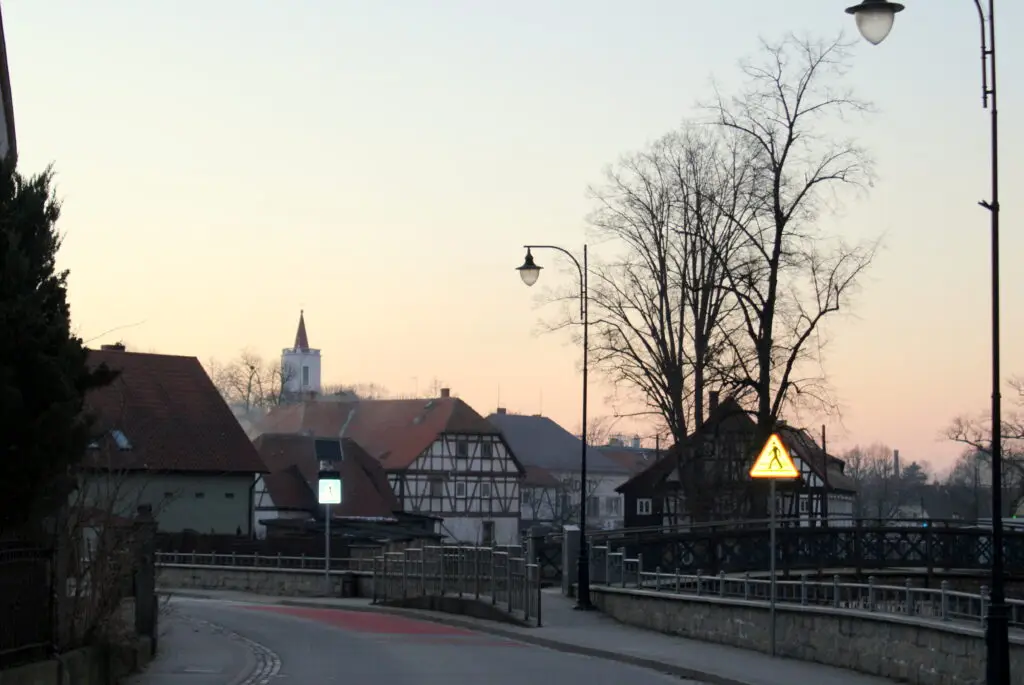
In the 1960s or even the 1980s, the exhaustion of the coal deposits might have seemed an extremely distant prospect. At the beginning of the third decade of the 21st century, it no longer is. If a just transition of the region is to succeed at all, now is the last moment to prepare for it.
There is another factor that should theoretically motivate decision-makers to act – the European Union’s climate policy. Poland is a signatory to the Paris Agreement, which calls for action to halt the rise in global average temperature. A report by the Instrat Foundation, issued in 2020, makes it clear that if the commitments are to be met, Poland and Europe must stop producing energy from coal by 2025, or 2030 at the latest.
We sent official enquiries about the transformational plans to the Lower Silesian Governor and the Ministry of State Assets. Within its structures, there is a government plenipotentiary responsible for the transformation of regions that live, or have lived until recently, from mining. We ask about the practical implementation of the arrangements that were supposed to resolve the Polish-Czech conflict around Turow. We want to know if Warsaw and Prague have joint strategies for the development of the region or coordinate in some way development plans for the border areas. We also ask whether and how social security is guaranteed for Turow mine workers. Finally, whether trade unions, NGOs, local communities are involved in the processes of setting strategies for a just transition – we assume, perhaps optimistically, that such is taking place.
The answer that came from the governor’s office is not particularly elaborate. We learn that in May 2021. The Provincial Social Dialogue Council of the Lower Silesian Voivodship supported the resolution of the provincial assembly on the adoption of a position on supporting activities for the inclusion of the Turošov Basin in the support area of the Fair Transformation Fund. In other words – the voivodeship wanted to apply for EU funds for the inevitable economic transformation. We also read a short account of the visit of the Provincial Social Dialogue Council to the mine. – The interest in the problem stems from the fact that the company is one of the largest employers in Lower Silesia, and a sudden reduction in its operations would significantly affect the labour market in the region and could lead to an increase in social unrest, representatives of the local administration explain. It is great that they decided to familiarise themselves with the problem on the ground and not just in theory, their conclusions are also undoubtedly true, but wouldn’t it be appropriate to think about the future more elaborately, too?
The Ministry of State Assets responds with one sentence: the issues we ask about “are outside the jurisdiction of the Ministry of State Assets”. Meanwhile, in 2021, it was this ministry that informed the media about the ongoing Polish-Czech talks in Prague, and did not claim not have anything to do with Turow.
The inclusion of the Turów region in the list of areas supported from Just Transition Fund became unrealistic back in 2022.
The condition for support was to prove that the mines would be either closed, or prepared to closure by 2030. Meanwhile, PGE intends to exploit the deposits as long as possible. It has not invested in the power plant’s infrastructure to close it down in a few years: in 2014, the company began an upgrade worth 800 million PLN that brought the plant into compliance with EU emission standards, effective from August 2021. The modernisation also included the construction of a new power plant unit. Namely on this unit, a few days before the opening, the green activists displayed their message in May 2021.
PGE representatives, on the one hand, do not hold out illusory hopes to the crew that the mine will remain in operation for many more years. But they also do not allow the thought that it will be closed before the lignite is exhausted. In 2022, the Turów mine received a permit to continue mining until 2044.
– There are still more than 20 years of work ahead. Contrary to appearances, this is a long and short time, because during this time we must also prepare for the fact that the mine will naturally end its production as the source of coal is exhausted
– said Ryszard Wasiłek, PGE’s vice-president of operations, in September 2022.
He assured that the company did not want to repeat the dramatic scenario from Wałbrzych and leave several thousand people in the lurch: both employees with their families plus the crews of cooperating companies. He expressed the hope that local governments, and not only Polish ones, would help in planning PGE’s future – he wished to cooperate with the authorities of the border regions of the Czech Republic and Germany. In the PGE Group’s Integrated Report 2021, the concept of a just transition was not only defined, but also visually highlighted in the text.
– A just transformation should be carried out in such a way that the changes taking place take into account and respect in the process the interests of the local community and territorial administration, investors and business, the needs of the environment, and that it also takes into account the creation of new jobs for coal workers.
This is basically a textbook definition. What actions follow?
Cooperation with the Czech local government, when the conflict over water first grew and then spectacularly exploded at the central level, is, against all appearances, not a complete abstraction.
In September 2021, head of the neighbouring Liberec Region, Martin Puta, was a guest in Bogatynia at a conference on the future of border regions, co-organised by PGE. Both Polish miners and Prime Minister Mateusz Morawiecki would agree with what he said then. Puta not only declared his readiness to create a joint transformation strategy with his neighbours. He said plainly:
– How long coal mining at Turów will continue? It depends on the Poles, on how the Poles will use coal for energy with a view to the country’s energy security. You cannot switch off a power source without having another stable one as a replacement.
PGE’s 2021 Integrated Report presents a detailed vision for the transformation of Turów and the use of the post-mining site. It names seven projects: the construction of energy storage facilities, the construction of wind farms with a capacity of up to 150 MW, the construction of photovoltaic farms with a capacity of approximately 100 MW, the creation of a mining museum, the launch of the ‘Virtual Power Plant’ programme and the erection of a new combined heat and power plant that will supply Bogatynia with heat, taking over the functions performed today by the Turów Power Plant. In the anniversary album, PGE even announces that investments in renewable energy will provide jobs for thousands of people. The projects were to be finalised by 2029.
In terms of photovoltaics, something is actually happening. Thanks to European funds, PGE Energia Odnawialna announced the launch of two one-megawatt PV Zawidów 1 and PV Zawidów 2 photovoltaic farms in May 2022. We asked PGE Mining and Conventional Energy spokeswoman Sandra Apanasionek about the other, undoubtedly ambitious elements of PGE’s vision of transformation. We wanted to know at what stage they are, how many specific jobs would be created thanks to the projects, whether locations had already been selected for them, and what the ‘Virtual Power Plant’ is, about which the Integrated Report says only that IT competences would be used. It would not be an exaggeration to say that the response left us perplexed. A spokeswoman stated that she was not in a position to answer the questions sent, as the company had no knowledge of the topics indicated.
The vision of employing former miners in windmills and photovoltaics does not convince Bogumil Tyszkiewicz.
– Driving here, you must have seen the photovoltaic installations by the roadside. Have you seen any workers at them? How many people might be needed for such work? – he asks.
Indeed, from the road from Zgorzelec it was impossible not to see the installations. There were no workers at them.
Bogumił Tyszkiewicz would be more at ease if a new investor appeared in Bogatynia, right now. He also had some hope from the announcement of the creation of NABE – the fully state-owned National Agency for Energy Security – to which, among other things, all assets of the coal-fired power plants are to be separated. Not, rather, to decommission them at express speed, but precisely to ensure a peaceful transition. As part of the build-up of NABE, the Treasury would buy out the entire Mining and Conventional Energy company from PGE. PGE would most likely take on the development of renewable energy.
But the creation of NABE is postponed. In September 2023, the Polish Senate rejected a bill without which the agency cannot be created . Before the elections planned for October, the Sejm was no longer scheduled to meet. And after the elections, the new government has already been formed by a completely different political option than the one that had vowed to fight to the death for Turów.
(to be continued)
[1] Z. Dobrzyński, Płynie struga węgla, s. 61.
[2] Archiwum Państwowe we Wrocławiu, coll. 92, p. 4-5.
[3 ]Red H. Izydorczyk, Kopalnia…, s. 46.

This report was developed with the support of Journalismfund.
Piotr Lewandowski, Iwona Lewandowska and Czesław Kulesza co-operated in the preparation of this report.
Subscribe to Cross-border Talks’ YouTube channel! Follow the project’s Facebook and Twitter page! And here are the podcast’s Telegram channel and its Substack newsletter!
Like our work? Donate to Cross-Border Talks or buy us a coffee!
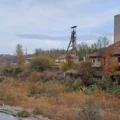
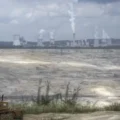
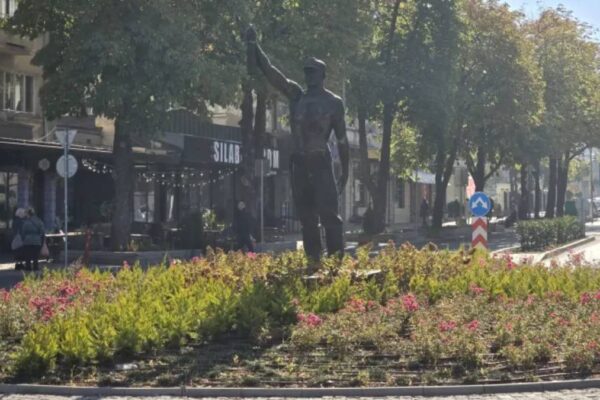

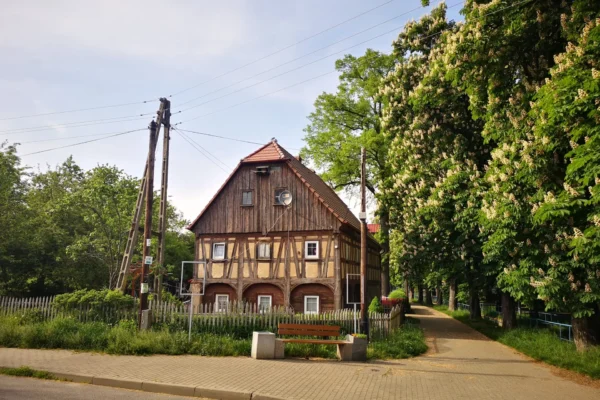
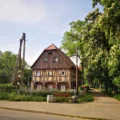
![Jiu Valley: is there a life after coal? [GALLERY]](https://www.foundintransition.eu/wp-content/uploads/2024/01/wieza-wyciagowa-i-chmury-scaled-1200x675-1-600x400.jpg)
![Jiu Valley: is there a life after coal? [GALLERY]](https://www.foundintransition.eu/wp-content/uploads/2024/01/wieza-wyciagowa-i-chmury-scaled-1200x675-1-120x120.jpg)
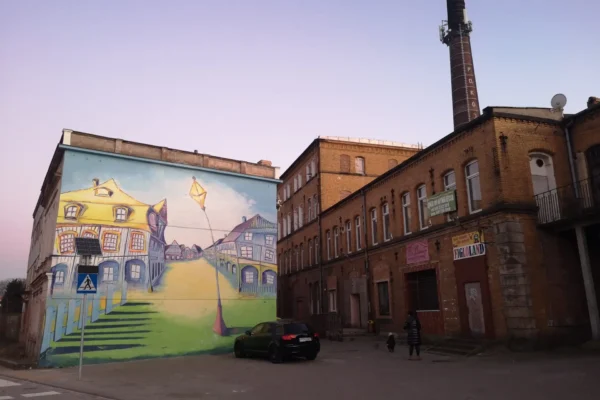
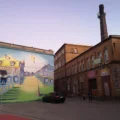
2 Comments
The Turów case comes back to court - Cross-border Talks
21 March 2024[…] (which is the owner and operator of the mine), spoke in slightly more realist terms. In 2022, they admitted that 20 years was not a long time to schedule both closure of a huge mine and starting new […]
Lost Opportunity for a Just Transition: the Case of Turów Lignite Mine. PART TWELVE: Uncertainty - Cross-border Talks
26 May 2024[…] Lost Opportunity for a Just Transition: the Case of Turów Lignite Mine [PART ONE] Lost Opportunity for a Just Transition: the Case of Turów Lignite Mine. PART TWO: In the New Poland Lost Opportunity for a Just Transition: the Case of Turów Lignite Mine. PART THREE: Pride of Socialist Poland Lost Opportunity for a Just Transition: the Case of Turów Lignite Mine. PART FOUR: First Worries About the Water Lost Opportunity for a Just Transition: the Turów case. PART FIVE: At Any Cost Lost Opportunity for a Just Transition: the Turów case. PART SIX: There Is No Plan Lost Opportunity for a Just Transition: the Case of Turów Lignite Mine. PART SEVEN: Arrogance and Lack of Empathy Lost Opportunity for a Just Transition: the Case of Turów Lignite Mine. PART EIGHT: Barriers and water pipes Lost Opportunity for a Just Transition: the Case of Turów Lignite Mine. PART NINE: Czech Skeletons in the Coal Closet Lost Opportunity for a Just Transition: the Case of Turów Lignite Mine. PART TEN: Paradoxes Lost Opportunity for a Just Transition: the Case of Turów Lignite Mine. PART ELEVEN: There will be … […]